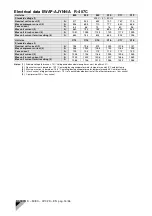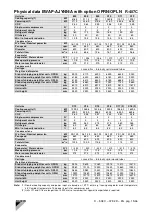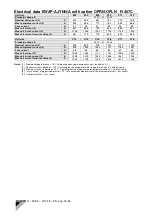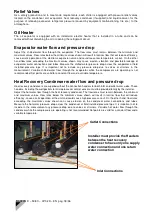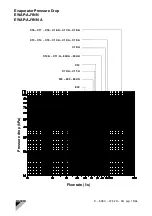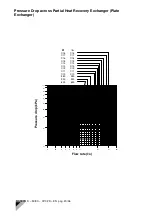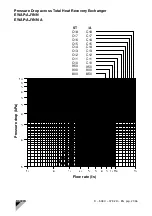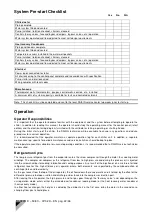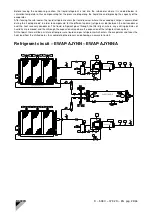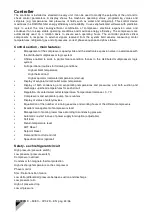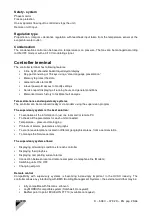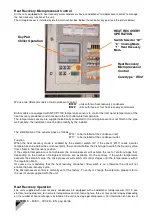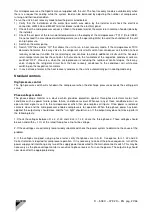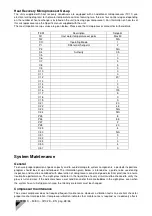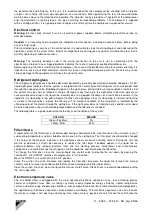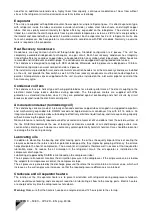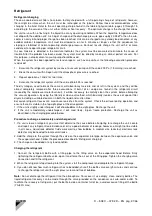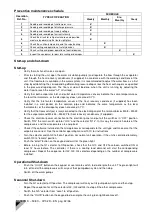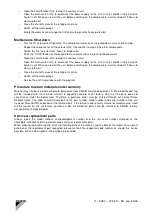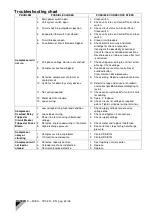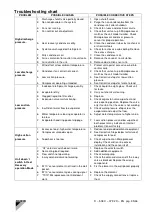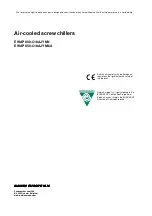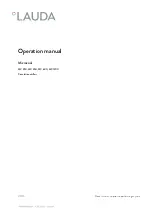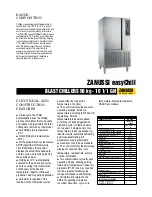
D – 508 C – 07/02 D – EN pag. 27/36
this microprocessor see the Specific manual supplied with the unit. The heat recovery mode is available only when
there is a request for cooling while the system load can be balanced by adjusting the number of compressors
running and their load condition.
To run the unit in heat recovery mode follow the points listed below:
1) Verify that the installation of the water flow switch was done by the installer and check the electrical
connection at M3.426 and M3.427 terminal blocks inside the electrical panel
2) Check that the microprocessor sensor is fitted in the pocket well of the water return common header (done by
the installer)
3) Check the set point of the return water temperature on the display of the microprocessor “TC10” (Carel IR32).
Do not exceed the max allowed water temperature (see the operating limits) to avoid the shut-down of the unit
on high pressure.
4) Switch on the water pump
5) Switch “ON” the selector “Q7” that allows the unit to run in heat recovery mode. If the microprocessor TC10
demands hot water, the 4 way-valve in the refrigerant circuit will switch from condenser coil function to heat
recovery condenser function (first control stage) and continue to activate additional circuits until the hot water
return temperature reaches the set point. In that scenario, the fan motors of the respective condenser coils are
switched “OFF”. Vice-versa, when the microprocessor is reducing the number of control stages, the 4 way-
valve changes the refrigerant circuit from the heat recovery condenser to the condenser coil, while also
switching on the respective fan motors.
6) In case of lack of water in the heat recovery condenser, the unit is automatically put in cooling mode only.
Standard controls
High pressure control
The high pressure switch will shut-down the compressor when the discharge pressure exceeds the setting point
value.
Phase/voltage monitor
The phase/voltage monitor is a device which provides protection against three-phase electrical motor fault
conditions such as power failure, phase failure, and phase reversal. Whenever any of these conditions occur, an
open contact signal is sent to the microprocessor which then de-energizes all inputs. Once power is restored,
contacts close and the microprocessor enables compressors for operation. When three-phase power has been
applied, the output relay should close and the "run light" should turn on. If the output relay does not close, perform
the following tests:
1. Check the voltages between L1-L2, L1-L3 and L2-L3 (L1, L2, L3 are the three phases). These voltages should
be even and 10% of the rated three-phase line-to-line voltage.
2. If these voltages are extremely low or widely unbalanced check the power system to determine the cause of the
problem.
3. If the voltages are good, using a phase tester, verify that phases are in A, B, C sequence for L1, L2 and L3.
Correct rotation is required for compressor operation. If it is necessary to correct the phase sequence, turn off the
power supply and interchange any two of the supply power leads wired to the main disconnect switch. This may be
necessary as the phase voltage monitor is sensitive to phase reversal. Turn on the power. The output relay should
now close after the appropriate delay.


